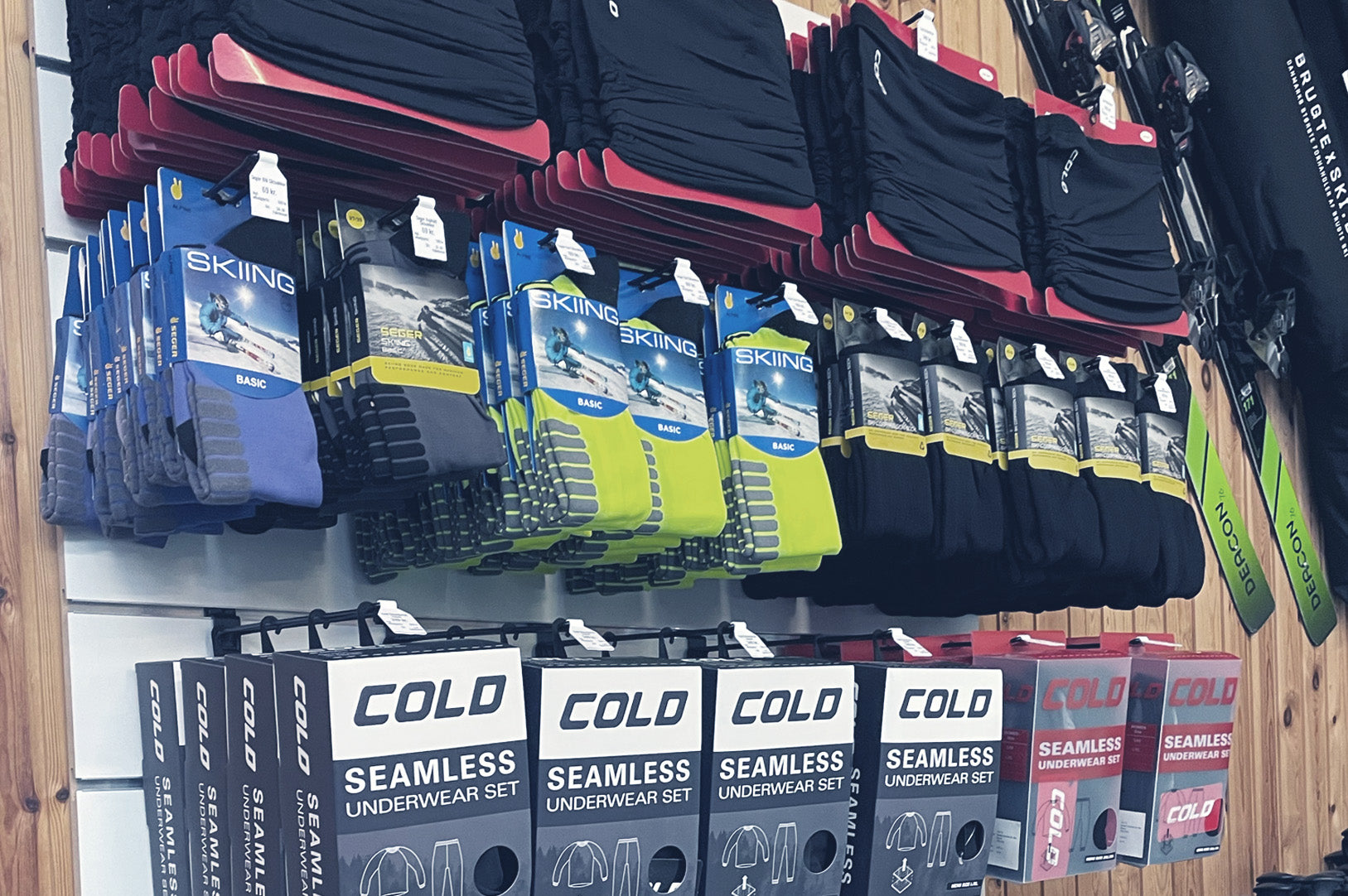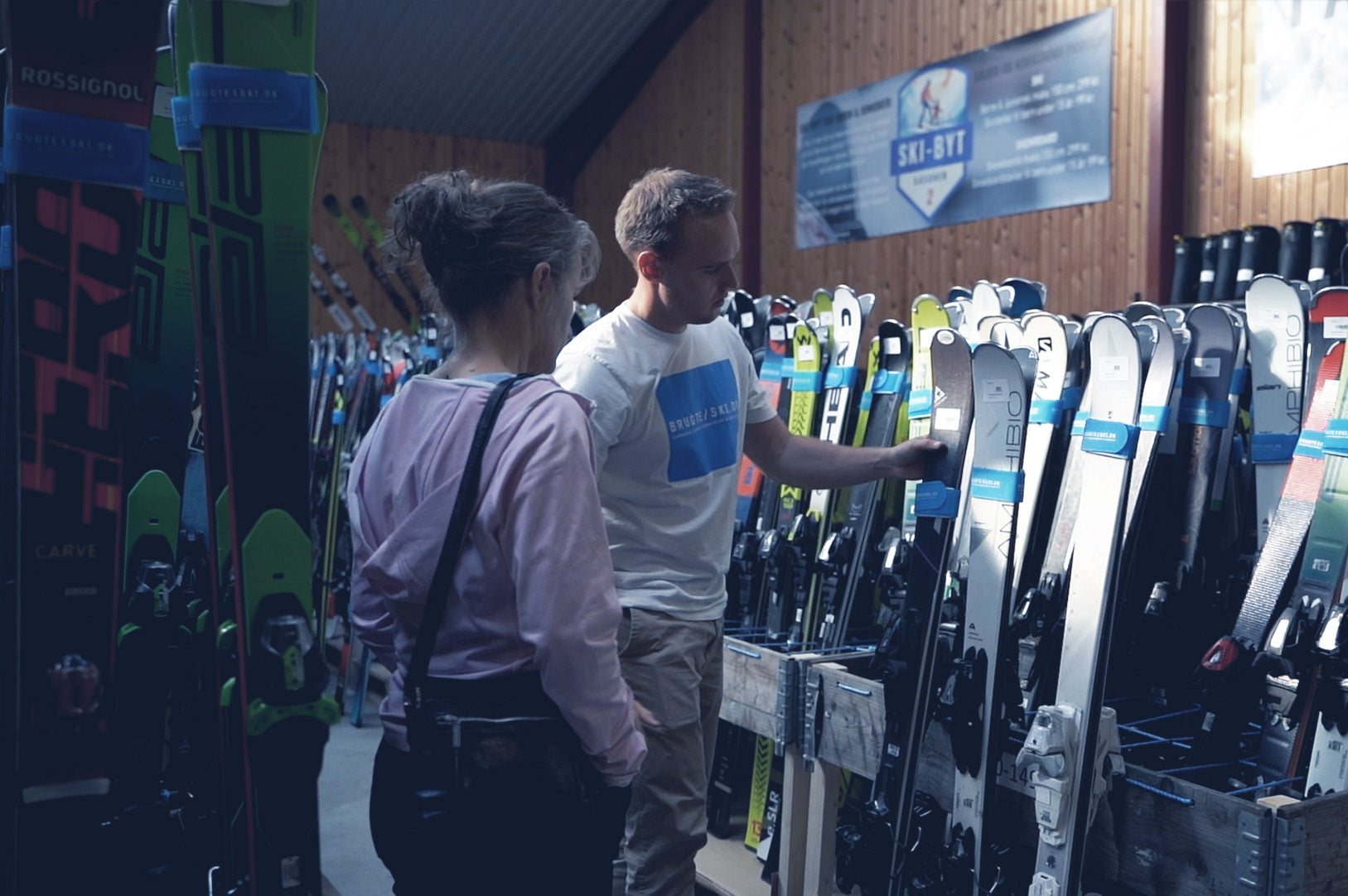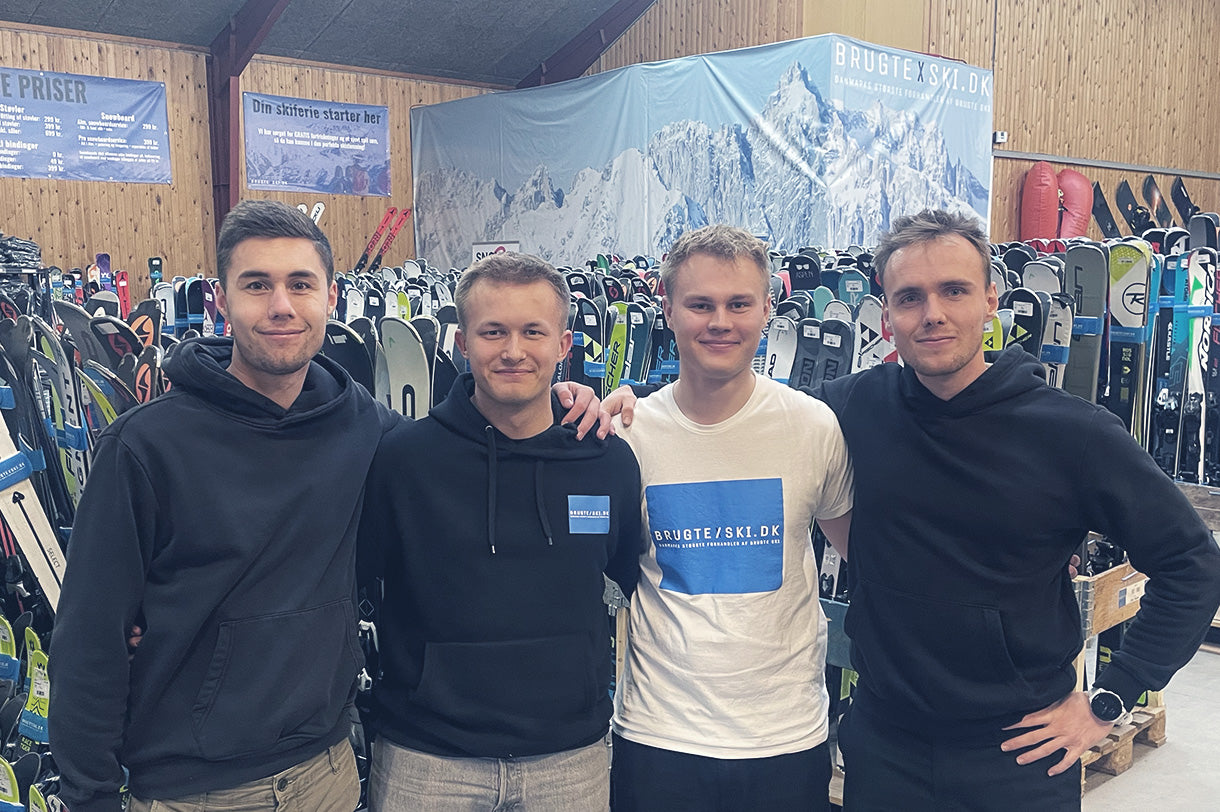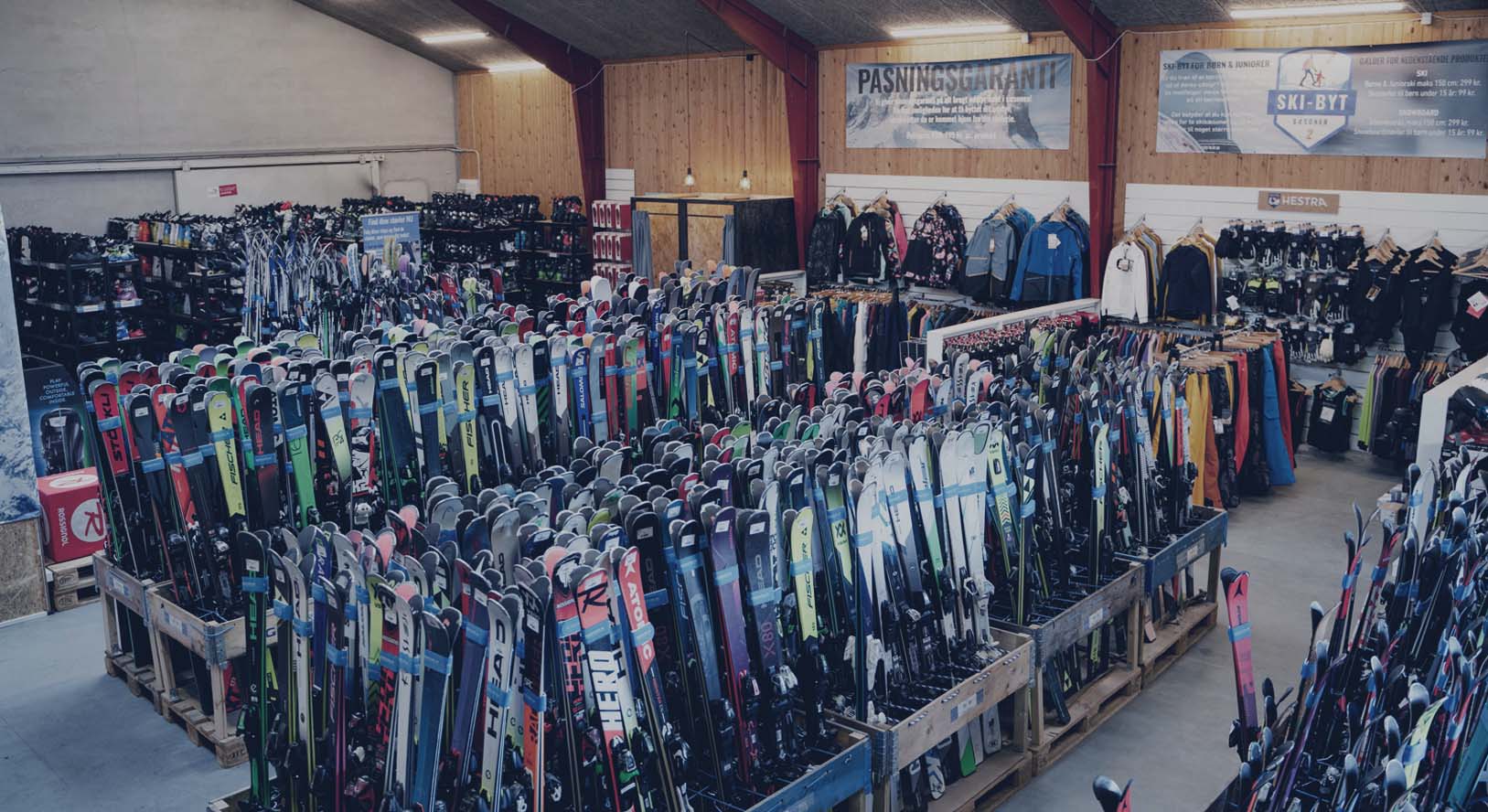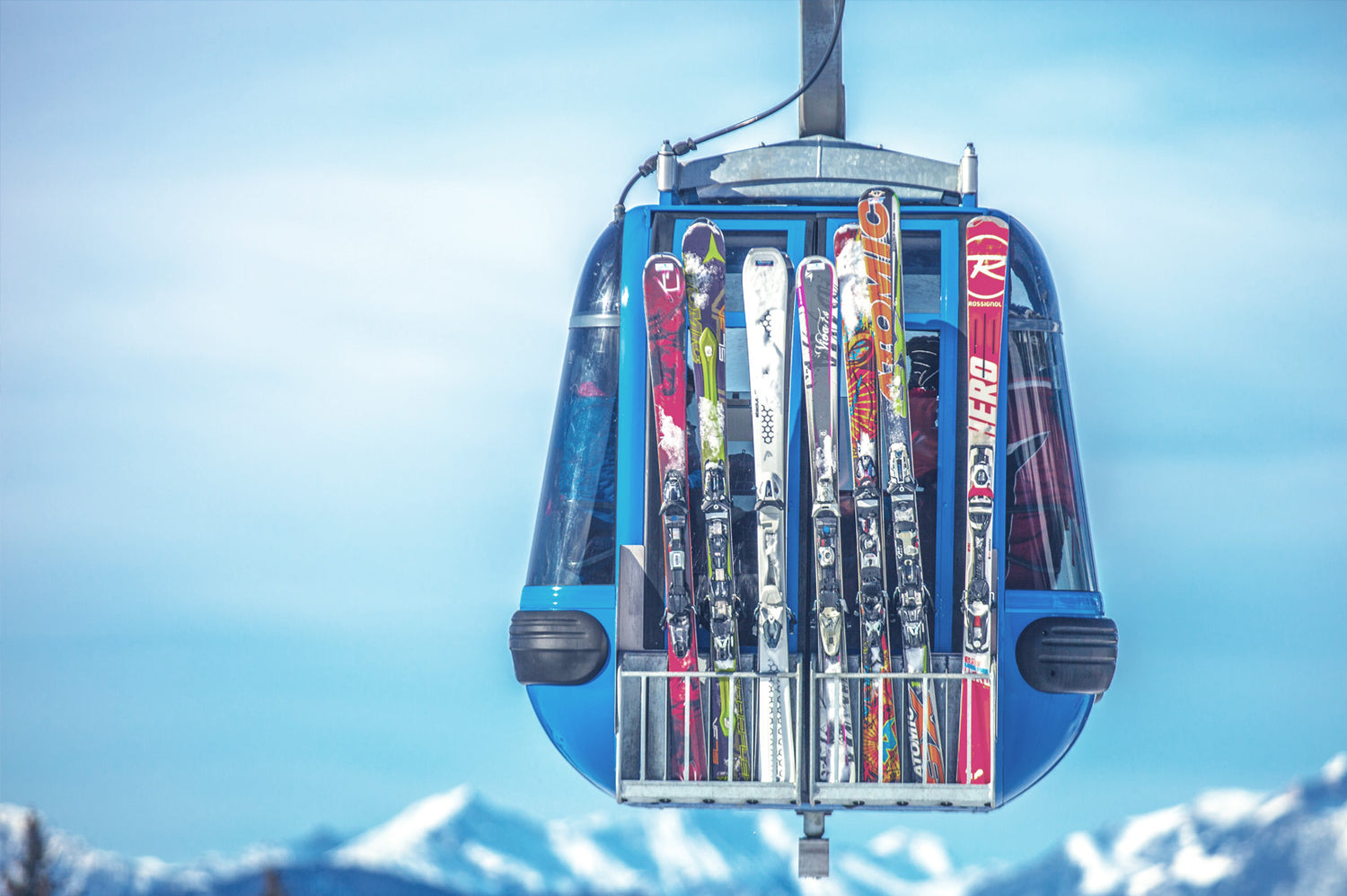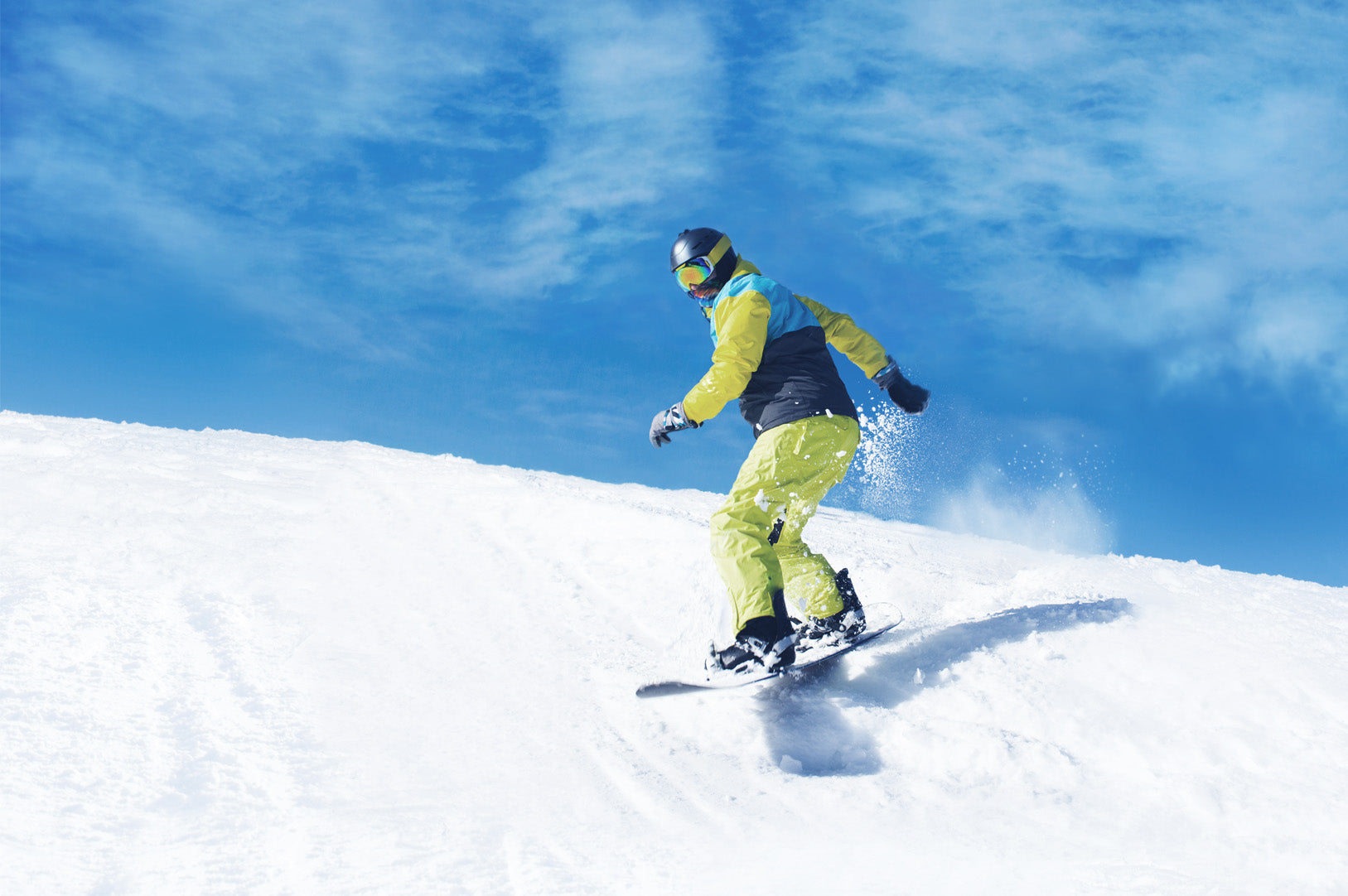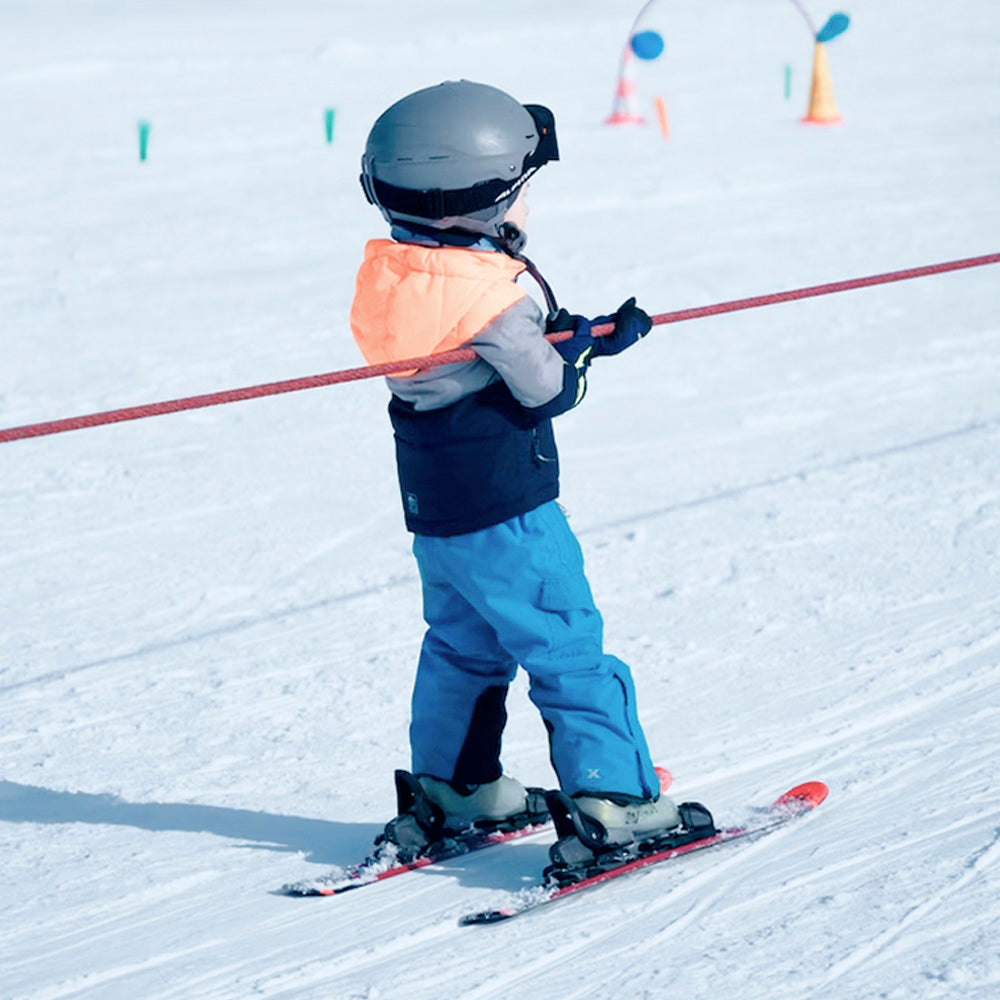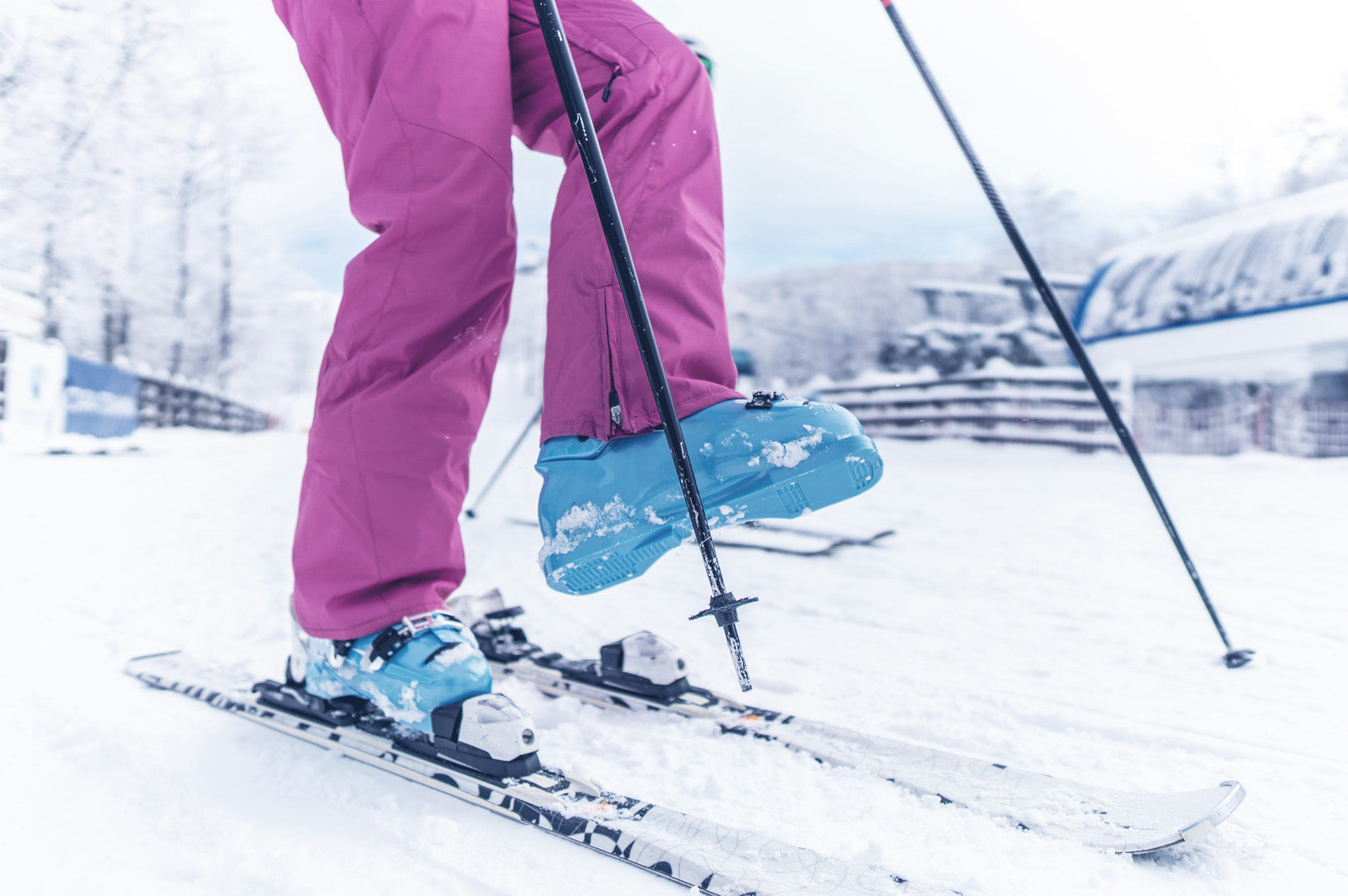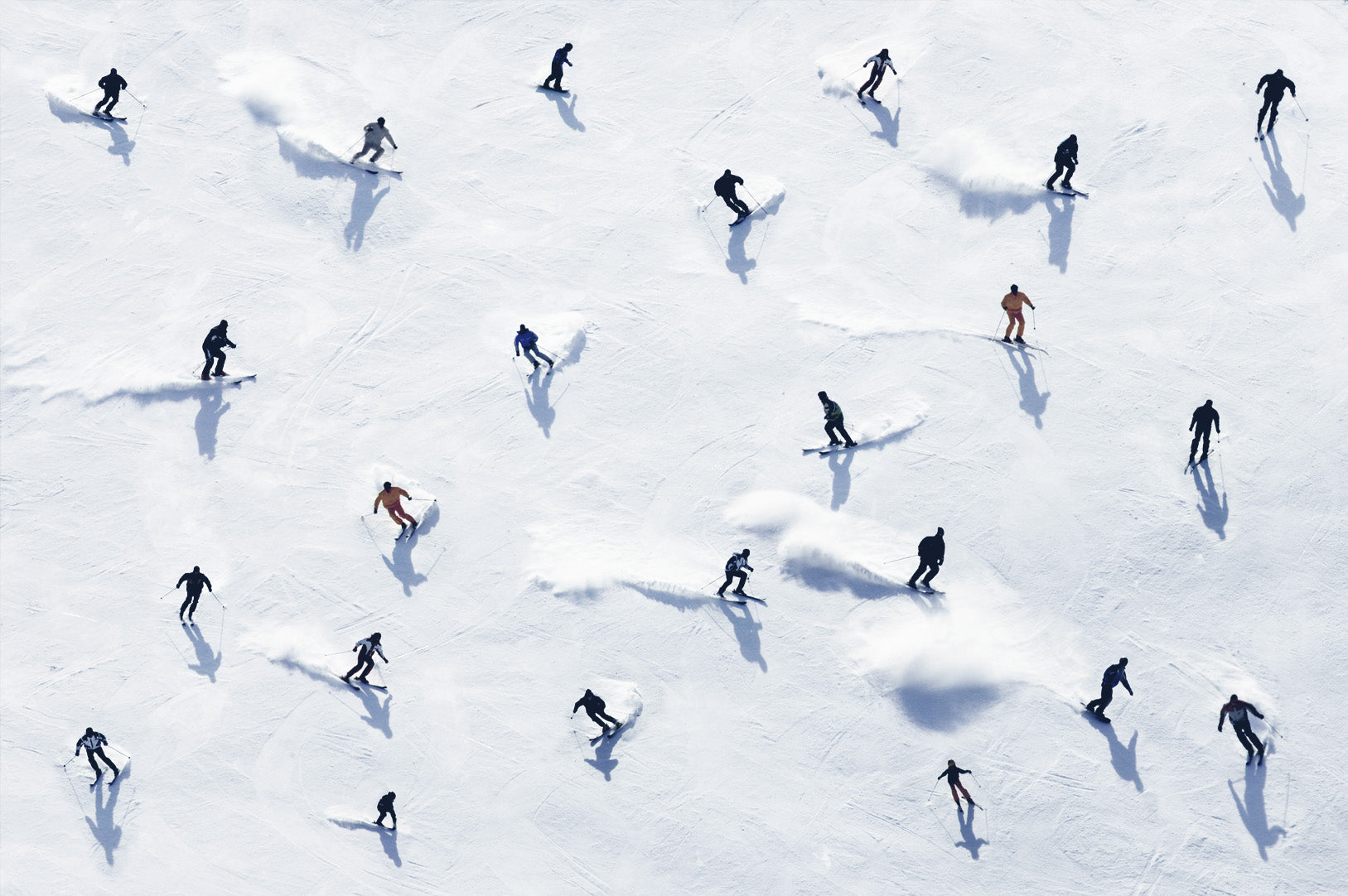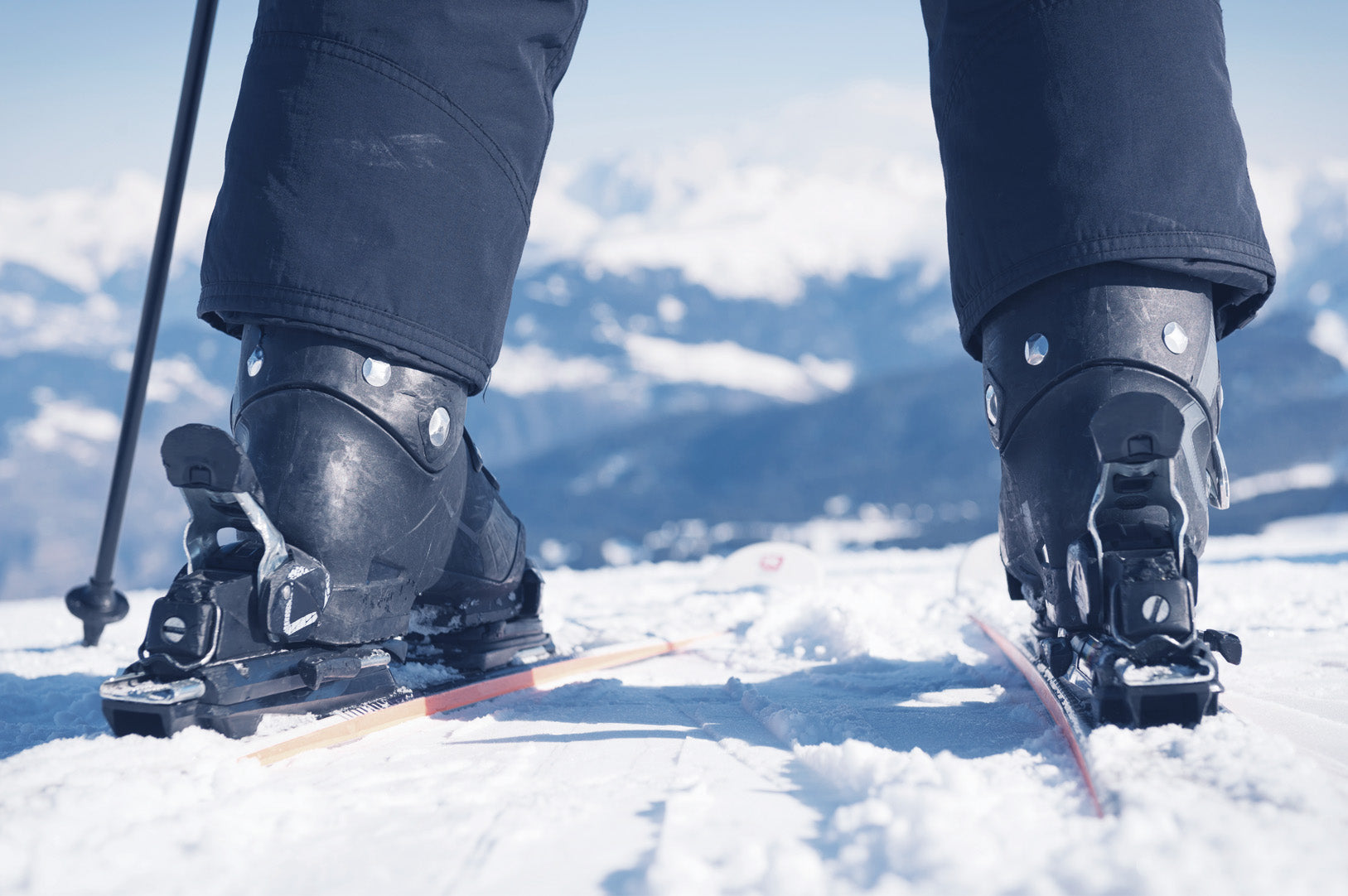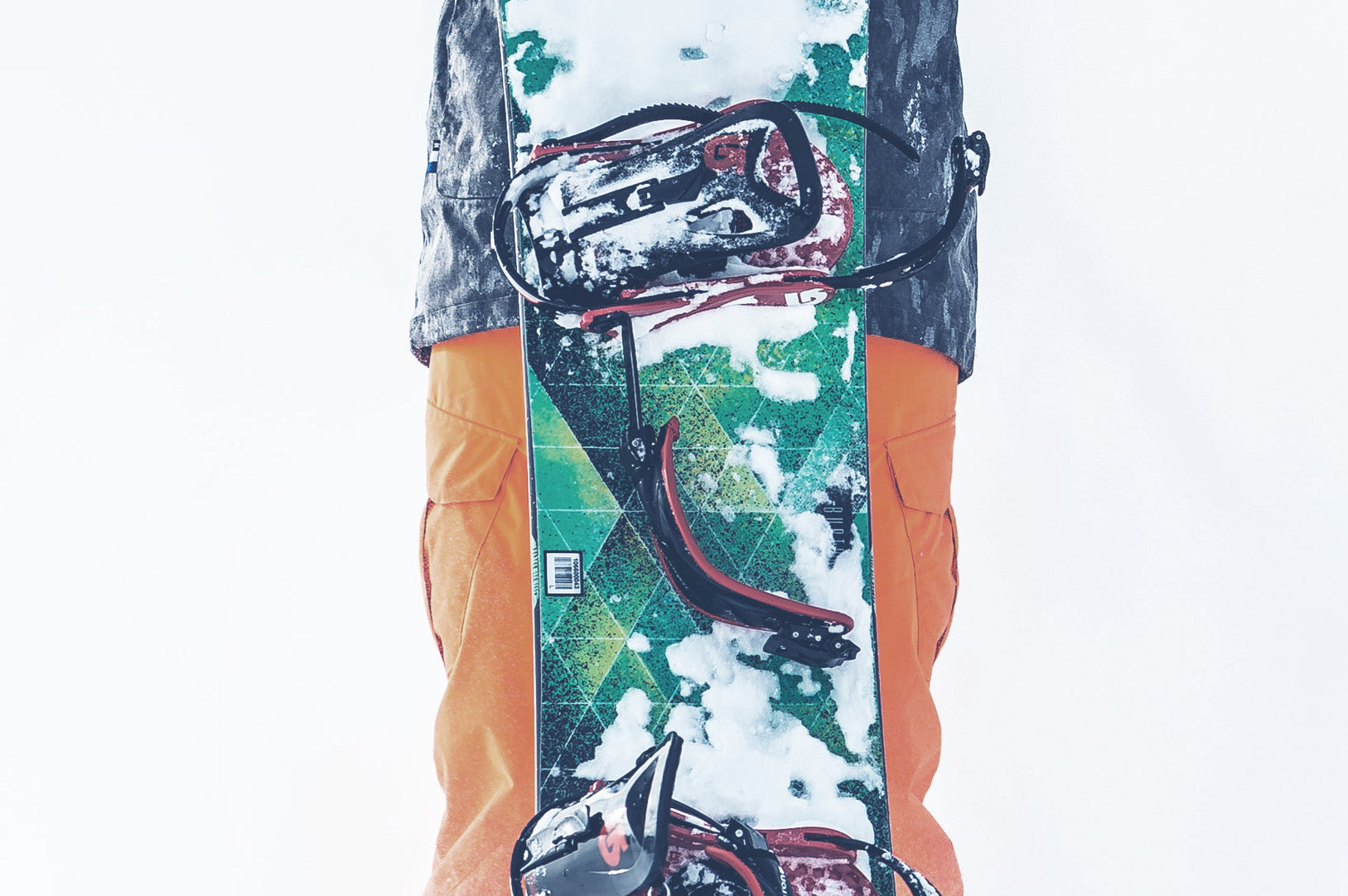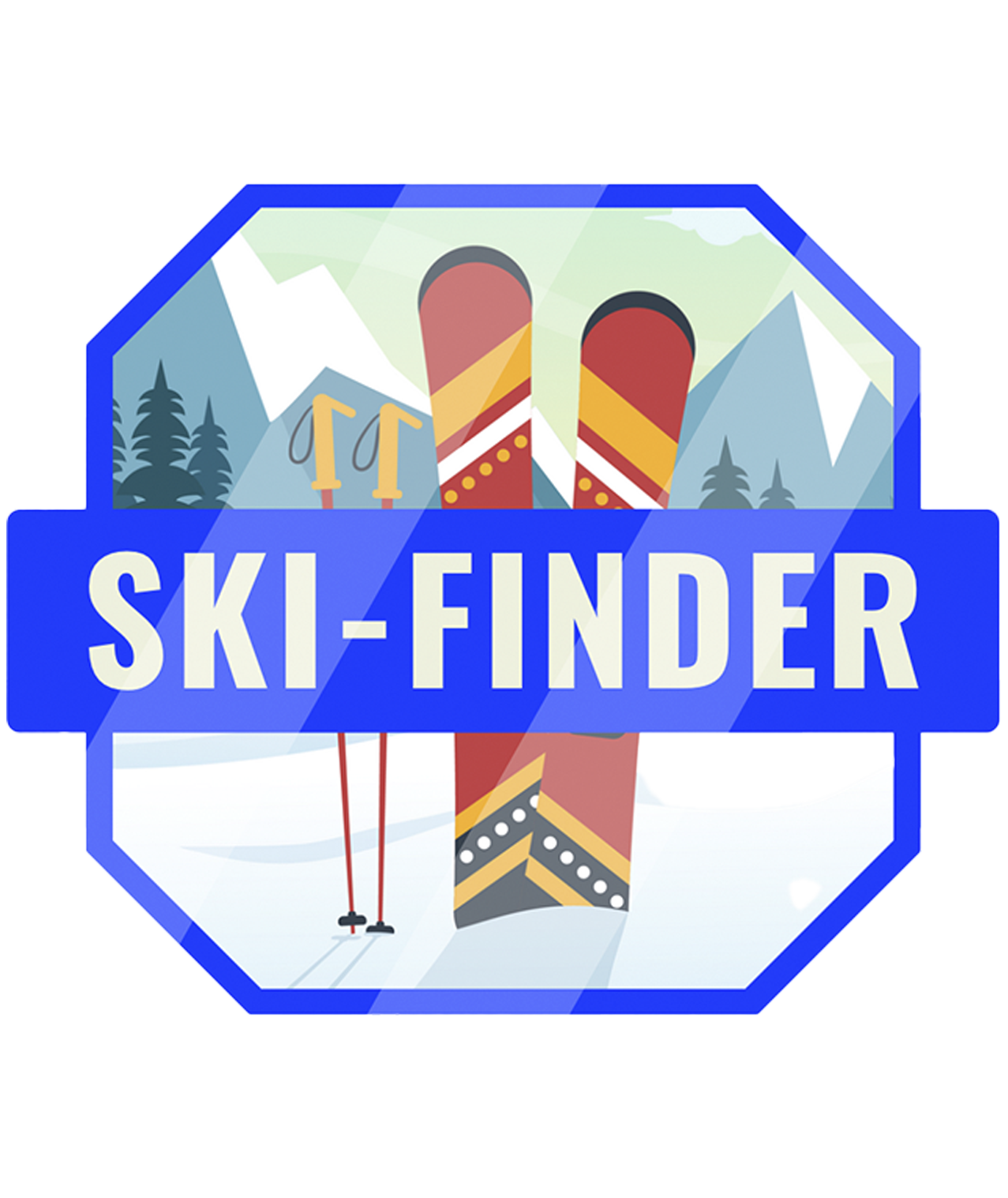To buy skis online, you need to know:
- Which skis suit you best
- The different types of skis you can choose from
- The characteristics of the skis
- How tall should my skis be?
1. Which skis suit you best
Finding the type of ski that suits you best doesn't have to be difficult. But when searching for skis, it can be incredibly overwhelming and hard to make sense of...
At secondskis.com, we have made it easy for you by dividing all our skis into 3 categories: Piste Skis, All Mountain, and Park/Off-piste skis.

2. The different types of skis you can choose from
Types of Skis
There are different skis depending on what you need them for. Piste skis are best for the hard-prepared slopes, while off-piste skis are best for the soft snow in the off-piste. That said, all skis can be used everywhere, but some skis are specially developed for specific areas on the mountain. It's like taking a racing bike into the forest. You could use it, but it's much easier on a mountain bike.
There are incredibly many different types of skis: Racing, Freestyle, Freeride, Carving, Big Mountain, All Mountain, and Powder skis. We have boiled all these variants down to 3 categories:
1. Piste Skis
Piste skis are the most used skis among Danes, and you probably already know them. This type of ski covers terms like Racing and Carving skis.
Piste skis are for you who love to race down the prepared slopes and spend most of your time on these types of slopes. This type of ski is the best and easiest to safely turn down the slopes. If you are a beginner or just not so confident on the boards yet, then this is your clear best choice of ski type.
Piste skis are in most cases 70 to 85 mm wide at the middle and can be up to 110mm wide at the top and bottom of the ski. This makes the skis naturally curved and gives the best characteristics for turning on the slopes.
2. All Mountain
These skis, as the word says, are for the whole mountain. These skis are a mix of piste skis and off-piste skis, making them easy to use on the entire mountain.
All Mountain skis are for you who also love to go out into the off-piste, along the prepared slopes, or between the trees. For you who like to ride in all sorts of other places, not just on the slopes! All Mountain is for you who feel comfortable on the slopes and want to try your hand at some new areas of the mountain!
All Mountain skis are often 86 to 95 mm wide over the middle and only slightly smaller than dedicated off-piste skis. Since the skis can be used on the entire mountain, they are not exclusively perfect for just one discipline, but here you get a good all-round ski.
3. Park/Off-piste
Park/Off-piste skis, also known as Freestyle and Freeride skis. This category of skis covers the more specialized types of skis, which are made for special places on the mountain.
These skis are for you who want to challenge yourself. For you who want to get far away from the prepared slopes, out into the soft untouched snow, or make big jumps in the fun park. Here you are more practiced, and maybe want to buy your second pair of skis, or just in love with powder!
Off-piste skis are often 96 to 110 mm over the middle, and Park skis are twin-tip skis, with center bindings. This means that both ends of the ski point upwards, so you can also ski backward on them.
3. The characteristics of the skis
Besides the width of the skis, there are some different characteristics that distinguish the different types of skis.
Radius and Sidecut

Sidecut is the curve the ski has. This means if the middle (Waist) of the ski is narrower than both the top (Tip) and the bottom of the ski (Tail), the ski gets an hourglass shape. Sidecut describes how wide a ski is at the waist, tip, and tail, and thus what shape the ski has.
Radius describes how sharply a ski can turn. A smaller radius makes it easier to carve and turn on the edge of the ski. Radius tells something about how many meters the ski needs to make a 180-degree turn when the ski is pushed to its limit. The 180-degree semicircle now achieved gives a circle center. From the center and out to the turn line, you can now measure the distance, which is the ski's turning radius. The smaller the radius on the ski, the faster you turn.
Rocker and camber
Rocker/camber, also known as "the bend in the ski," varies depending on the ski type. Camber is often seen in piste skis, as it provides better skiing on hard-prepared slopes. Rocker, which is the opposite of camber, also better known as "reverse camber," makes the skis float better in the soft snow in the off-piste, and is therefore often seen in All Mountain Skis. A mix of camber and rocker provides the ultimate best skiing.
There are many different ways to combine both rocker and camber. Below are different combinations of rocker and camber and what impact they have on the skis.

Camber is where the center of the ski curves upwards. It provides suspension and rebound of energy, which is good on the prepared slopes.
Twintip both tip and tail are bent upwards, allowing better backward skiing and tricks.
Tiprocker has an early lift of the tip - suitable for powder snow.
Tip and tail rocker, both tip and tail have an early lift, ensuring good floating properties.
Full rocker is a profile without camber, but where tip and tail are lifted early, providing good floating properties.
Reverse Camber is best suited for off-piste with its large curve at both ends.
Flex
Ski flex describes how stiff or soft the ski is. The amount of flex in your skis depends on your skiing style. If you are lighter and have a calm skiing style, you should consider getting skis with a softer flex. If, on the other hand, you are heavier and have an aggressive skiing style, you should consider getting a strong ski with a stiffer flex.
4. How tall should my skis be?
Choosing ski size can be really complicated... But it doesn't have to be! A professional will use aspects like height, weight, type, style, level, rocker, and radius to find the size. We make it a bit simpler while ensuring you achieve the right length for you:

-By level
Level and ski type are the most important aspects when it comes to ski size. As a beginner, it is an advantage to have slightly shorter and thus more controllable skis. Skis that reach about your chin will make it easier to turn and are therefore suitable for beginners. As an intermediate skier, your skis should be longer, as it provides more stability at high speed on the slopes. As an expert, you should have the longest skis, which either reach the top of your head or even higher.
Your skis don't know how heavy you are! Therefore, it is assumed that you are within the normal range in terms of weight. If you are either underweight or overweight, you can respectively subtract 2 cm from the ski size (if underweight) or add 2 cm if you are on the heavier side.
-By ski type
The ski type also affects how tall your skis should be. If you own 2 pairs of skis, e.g., piste skis and off-piste skis, your off-piste skis should be significantly taller than your piste skis. This is because off-piste skis often have a larger rocker, which means the contact layer between the snow and the ski is smaller than on regular piste skis. Therefore, your Park/Off-piste skis should be longer than your piste skis to achieve the same contact surface.
It is important to be realistic about your level and not choose skis that are too long. Start with a pair of shorter skis and practice on these. Then you might have the courage for a longer pair when you become more experienced.

